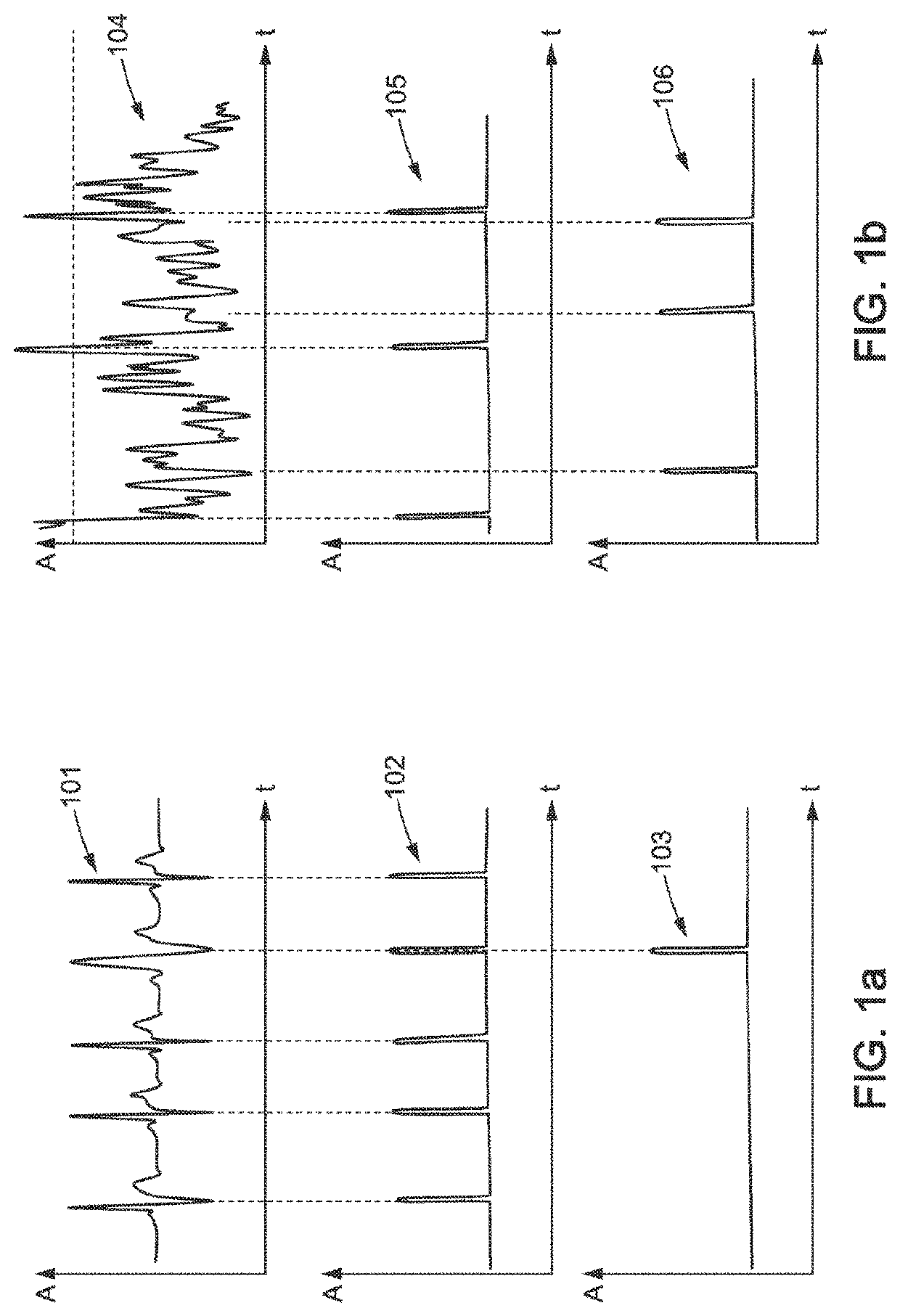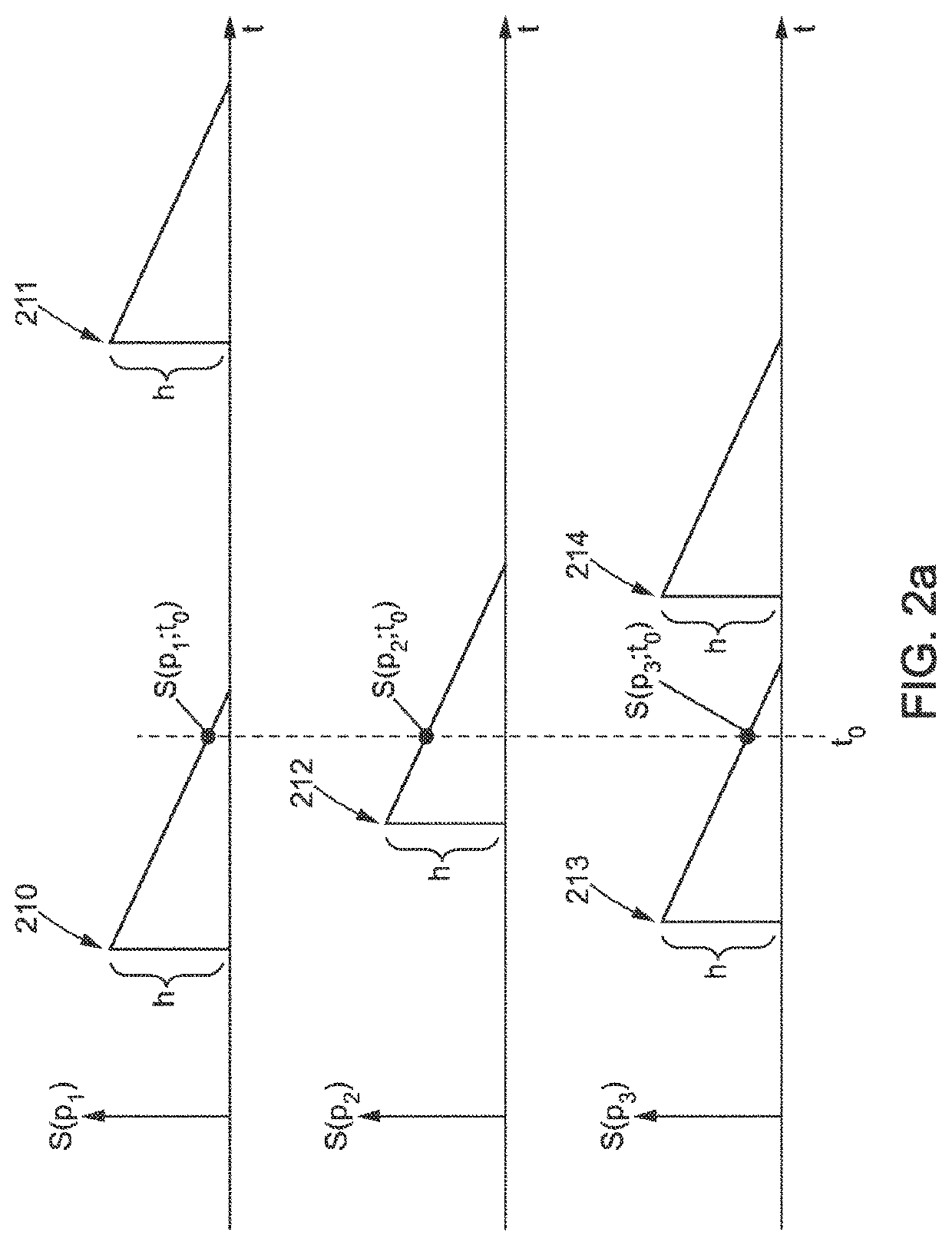Method for pattern recognition in a plurality of signals
- Summary
- Abstract
- Description
- Claims
- Application Information
AI Technical Summary
Benefits of technology
Problems solved by technology
Method used
Image
Examples
Embodiment Construction
[0060]FIG. 1a shows a generating of events from a signal that represents a heart rate.
[0061]In this example, the curve 101 represents a heart rate. This curve can be received in the form of continuous data (e.g. analogue signal) or in the form of sampled data (e.g. digital signal).
[0062]During the receiving of the signal, it is possible to determine certain characteristics that are proper to the signal. These characteristics can be, in a non-limiting manner:[0063]the appearance of a particular pattern in the signal (e.g. appearance of a wave R (or QRS complex) in an electrocardiogram or the end of an engine cycle for a machine-tool);[0064]the variability of a pattern of the signal (e.g. variability of the repetition period of the wave R in an electrocardiogram or variability of an engine cycle time for a machine-tool);[0065]the temporal width of certain patterns (e.g. width of the interval QT in an electrocardiogram or engine cycle time for a machine-tool);[0066]the maximum value of...
PUM
 Login to view more
Login to view more Abstract
Description
Claims
Application Information
 Login to view more
Login to view more - R&D Engineer
- R&D Manager
- IP Professional
- Industry Leading Data Capabilities
- Powerful AI technology
- Patent DNA Extraction
Browse by: Latest US Patents, China's latest patents, Technical Efficacy Thesaurus, Application Domain, Technology Topic.
© 2024 PatSnap. All rights reserved.Legal|Privacy policy|Modern Slavery Act Transparency Statement|Sitemap



